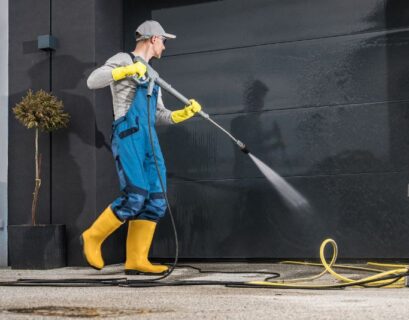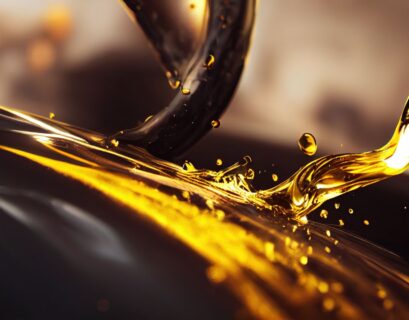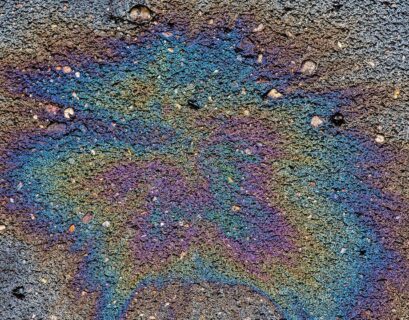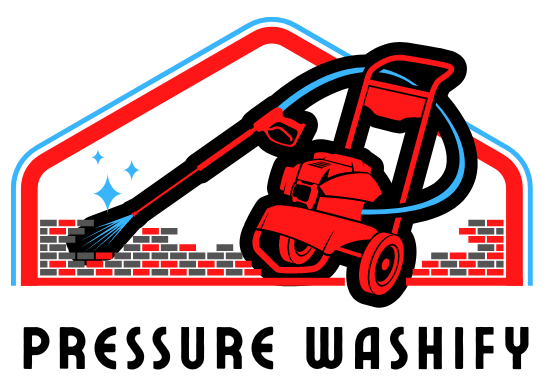Affiliate Disclaimer: This post may contain affiliate links, meaning we get a commission if you decide to make a purchase through our links, at no extra cost to you.
Pressure washers are a cornerstone of effective cleaning, be it for your home, vehicle, or your patio. They’re designed to simplify the process of cleaning stubborn dirt and grime, turning a tedious task into a significantly more manageable chore. As with any tool, however, the effectiveness of a pressure washer relies heavily on whether it suits the job at hand. This guide is designed to help you understand the different features of pressure washers, and in essence, make an educated choice when you decide to purchase one.
Whether it’s the pressure power (PSI), water flow rate (GPM), adjustability, the kind and length of the hose, or the different nozzle types, each pressure washer feature plays a unique role in the functionality of a pressure washer. Further nuances like portability, ease of use, noise levels, safety features, and price and warranty considerations also factor into finding a pressure washer that works best for your cleaning needs.
1. Adjustable Pressure
An essential feature that many users look for in a pressure washer is adjustable pressure control. This control allows them to fine-tune the output of the washer for different purposes, ultimately providing versatility and adaptability to tackle numerous cleaning tasks.

Different Pressure Settings and Their Uses
Adjustable pressure settings typically come in the form of a dial or a knob, allowing users to regulate the pressure output according to the specific cleaning job. Some machines may also have pre-set options for different cleaning scenarios.
For instance, you may want a lower pressure when washing cars or cleaning delicate surfaces, to avoid causing any damage. Conversely, higher-pressure settings can be more effective for tackling stubborn dirt, mold, or grime on harder surfaces like driveways and patios.
Knowing how to utilize different pressure settings effectively ensures that no job is too difficult to handle, while also reducing the risk of damage or wear on softer surfaces and materials.
2. Hose Length and Type
The right hose length and type are crucial factors to consider when selecting a pressure washer. This feature not only impacts your ability to reach the areas you want to clean efficiently but also the ease with which you can maneuver the machine itself.
Hose Length for Maneuverability and Ease of Use
A pressure washer’s hose length determines the reachability of your cleaning targets without having to move the washer itself. Longer hoses are generally more convenient to use, providing better coverage and allowing more distance between the main unit and the cleaning surface.
A guideline for selecting hose length is as follows:
- For residential use, a hose length of 20 to 25 feet is usually sufficient.
- For larger properties or commercial purposes, hoses that measure 50 feet or more offer better reach and maneuverability.
It is essential to choose a hose length that best accommodates your specific cleaning needs. You want to avoid constantly moving the pressure washer, as it may slow down your cleaning process.
Comparison of Different Hose Types
Different hose types have varying durability, flexibility, and ability to resist kinking. Here’s a comparison of the most common hose types found in pressure washers:
- Polyurethane Hoses: Known for their durability and lightweight design, these hoses offer exceptional flexibility and are kink-resistant. However, they can be more expensive than other hose types.
- PVC/Plastic Hoses: A budget-friendly option, PVC hoses tend to be the most common type found in pressure washers. They offer decent flexibility, but are more prone to kinking and wear over time.
- Rubber Hoses: Heavy-duty and flexible, rubber hoses are less likely to kink, and are often seen in high-end pressure washer models or as an aftermarket attachment. However, they can be relatively bulky and cumbersome to handle.
Recommendations for Selecting the Right Hose
Consider both the hose length and the material based on your needs, frequency of use, and desired durability. It’s worth investing in a quality hose for optimum flexibility, ease of use, and increased lifespan, especially if you plan to use your pressure washer often or for challenging jobs.
Read more: All About Pressure Washer Hoses.
3. Nozzles and Attachments
A pressure washer’s functionality can be greatly expanded by the use of different nozzles and attachments. Each nozzle type is designed for a specific purpose, providing different spray patterns and pressure levels to suit varying cleaning tasks.
Importance of Various Nozzle Types
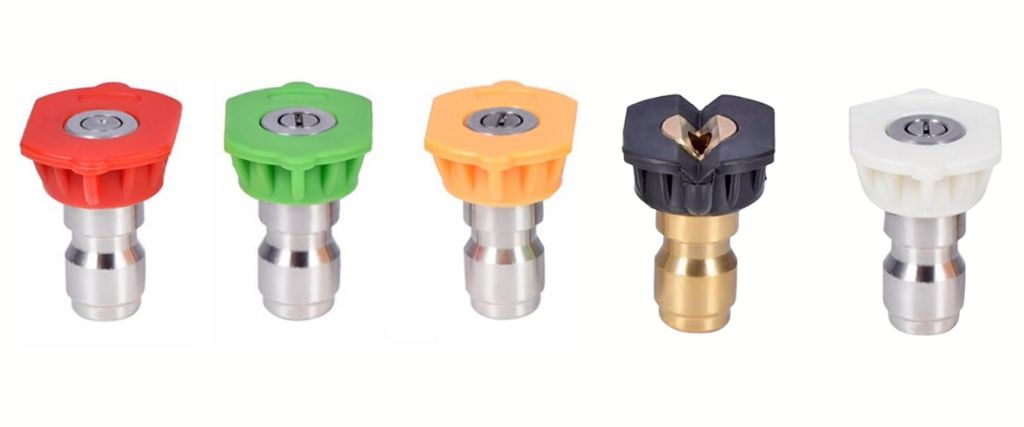
Pressure washer nozzles come in various shapes and sizes, each indicated by a different color to denote its spray pattern.
- Red Nozzle (0°): Provides a highly concentrated and intense jet of water. It is best for cleaning very tough stains or for stripping paint.
- Yellow Nozzle (15°): Provides a small-angled spray suitable for heavy-duty cleaning tasks such as removing dirt from concrete, brick, or masonry.
- Green Nozzle (25°): Delivers a wider spray pattern that’s typically used for basic cleaning of home exteriors, decks, or sidewalks.
- White Nozzle (40°): Offers the widest spray pattern, making it perfect for gentle cleaning tasks like washing cars, windows, or other delicate surfaces.
- Black Nozzle (65˚): Often referred to as the soap nozzle as it is used for applying detergent for deep cleaning tasks.
Specialty Attachments for Added Functionality
In addition to the standard nozzles, there are several specialty attachments that can make cleaning tasks even more efficient:
- Turbo or Rotary Nozzles: Combines the power of the 0° nozzle with the spray area of a 25° nozzle by emitting a circular, rotating spray.
- Soap and Detergent Dispensers: Allows the user to apply cleaning solutions to surfaces for a more thorough wash.
- Telescoping Wand: Extends the reach to help clean high or hard-to-reach areas.
- Surface Cleaners: Designed to clean large flat surfaces quickly and evenly, without leaving streaks. Find out the 7 Best Surface Cleaners.
- Water Broom: Ideal for cleaning large, flat surfaces like driveways or patios.
Read more about pressure washer nozzles.
4. Portability and Ease of Use
When considering the purchase of a pressure washer, it’s important to think about how easy it is to maneuver and operate. This determines the level of convenience you can experience during cleaning tasks.
Wheel Design and Weight
pressure washers should come equipped with a robust set of wheels that make the unit easy to move around, particularly in larger cleaning areas. The two main wheel types typically used are:
- Plastic wheels are lighter and work adequately on smooth surfaces.
- Air-filled tires provide smoother mobility on rough terrains but are generally heavier.

Ideally, the unit should be lightweight to aid in easy transportation. However, heavier units usually have more robust and high-performing components, trading off portability for power.
Ergonomically Designed Features
The user-friendliness of the machine also plays into the design of the pressure washer. Pay close attention to features such as:
- Handle Design: A well-designed handle makes the pressure washer more comfortable to navigate during use.
- Hose Reels or Hooks: These can help manage your hoses and prevent tangles or kinks.
- Onboard Storage for Accessories: Having slots for storing nozzles and attachments can improve organization and convenience.

Intuitive Operation
The operation should be straightforward, with easy-to-understand controls. Look for features such as:
- Easy-to-Access On/Off Switches: These can improve the overall user experience.
- Clearly Labeled Dials or Buttons: These make adjusting settings or changing functionality easier.
Each individual’s need might vary, and hence it’s important to personally assess the portability and ease-of-use aspects of a pressure washer before purchasing. As the wise saying goes, ‘Try it before you buy it!’
5. Maintenance
Another major consideration when purchasing a pressure washer is the amount and type of maintenance it requires. Proper maintenance ensures that your pressure washer performs optimally for a longer time.
Regular Cleaning and Post-Use Care
Regular cleaning is essential for the longevity of your pressure washer. This includes:
- Rinsing off dirt and grime from the machine
- Cleaning out the nozzles with a fine needle to ensure they don’t get blocked
- Flushing out the system after using detergent to avoid build-up
Residual water should always be purged from the system at the end of every use to prevent damage caused by freezing during colder temperatures.
Periodic Checks
Regular inspection and replacement of certain components like the hose, spray gun, water filter, and seals can help prevent leaks and maintain the pressure washer’s performance.
Seasonal Maintenance
Before storing the pressure washer for long periods, such as over winter, it’s recommended to add a pump protector or antifreeze to the system to prevent internal parts from seizing or rusting.
Professional Servicing
While regular home maintenance is crucial, it may be beneficial to have your machine serviced professionally every few years. This can ensure that vital internal components receive appropriate attention.
Personal Safety
Finally, always ensure that the machine is disconnected from the power source before performing any maintenance activities, to prevent accidents.
Read more: Complete Pressure Washer Maintenance Guide.
6. Environmental Considerations
Being an environmentally responsible consumer is crucial in today’s world. As such, it’s important to evaluate the environmental impact of using a pressure washer and how to minimize it.
Water Conservation
Pressure washers can use less water than garden hoses for the same cleaning tasks, making them a more water-efficient choice. To further conserve water, you can adapt your usage habits by:
- Promptly turning off the pressure washer when not actively cleaning to avoid wasting water.
- Using adjustable pressure settings to lower water consumption by selecting a pressure that is appropriate for the task.
Cleaner Technologies
Electric pressure washers inherently have a lower environmental footprint than gasoline-powered alternatives as they produce no exhaust emissions. Some pressure washers are even designed with energy-saving settings, such as an auto shut-off feature to minimize power consumption.
Biodegradable Cleaning Solutions
Many detergents or cleaning solutions are formulated with harsh chemicals that can harm the environment. To minimize your impact, consider using biodegradable, eco-friendly detergents designed specifically for pressure washers. These alternatives not only offer effective cleaning performance but also reduce harm to the surrounding flora and fauna.
Disposing of Waste Water Properly
When pressure washing, contaminants such as dirt, grease, and chemicals are mixed into the wastewater. Avoid allowing wastewater to flow into storm drains, where it can pollute local water sources. Instead, redirect it to a landscaped area or a dedicated water treatment system. Always adhere to local regulations regarding wastewater disposal.
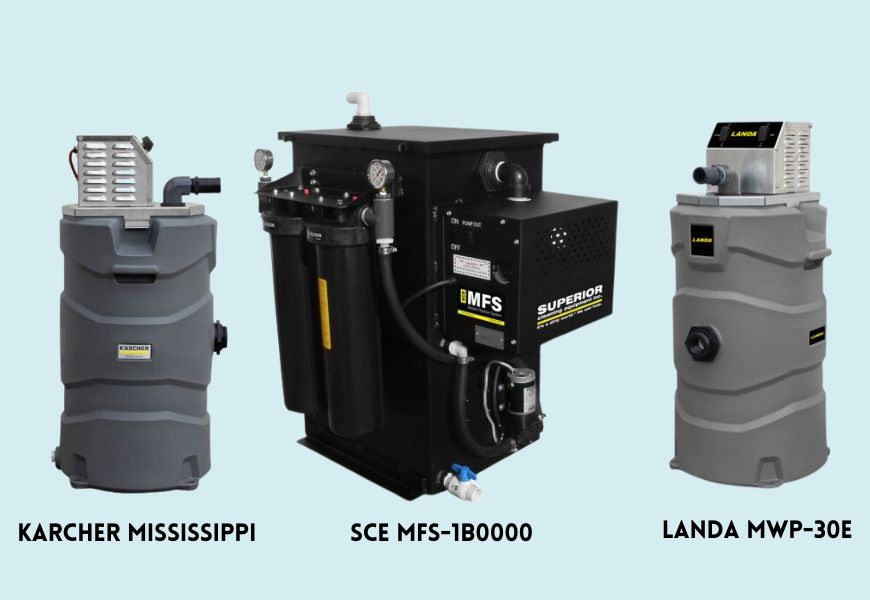
Conclusion and Final Thoughts
Pressure washer is an indispensable tool for keeping your home, outdoor spaces, and vehicles clean. Choosing the right model can make this task enjoyable and more efficient. In conclusion, some key features and factors to consider when purchasing an pressure washer include:
- Determining the right PSI and GPM for your specific needs.
- Considering the motor type and power source.
- Selecting the appropriate hose length and material.
- Expanding your washer’s functionality by using various nozzles and attachments.
- Assessing the portability and ease of use.
- Conducting regular maintenance to prolong the life of your machine.
- Minimizing your environmental impact through responsible usage and eco-friendly choices.
By evaluating these factors and understanding your individual cleaning requirements, you will be able to make an informed decision and select the best pressure washer for your needs.




